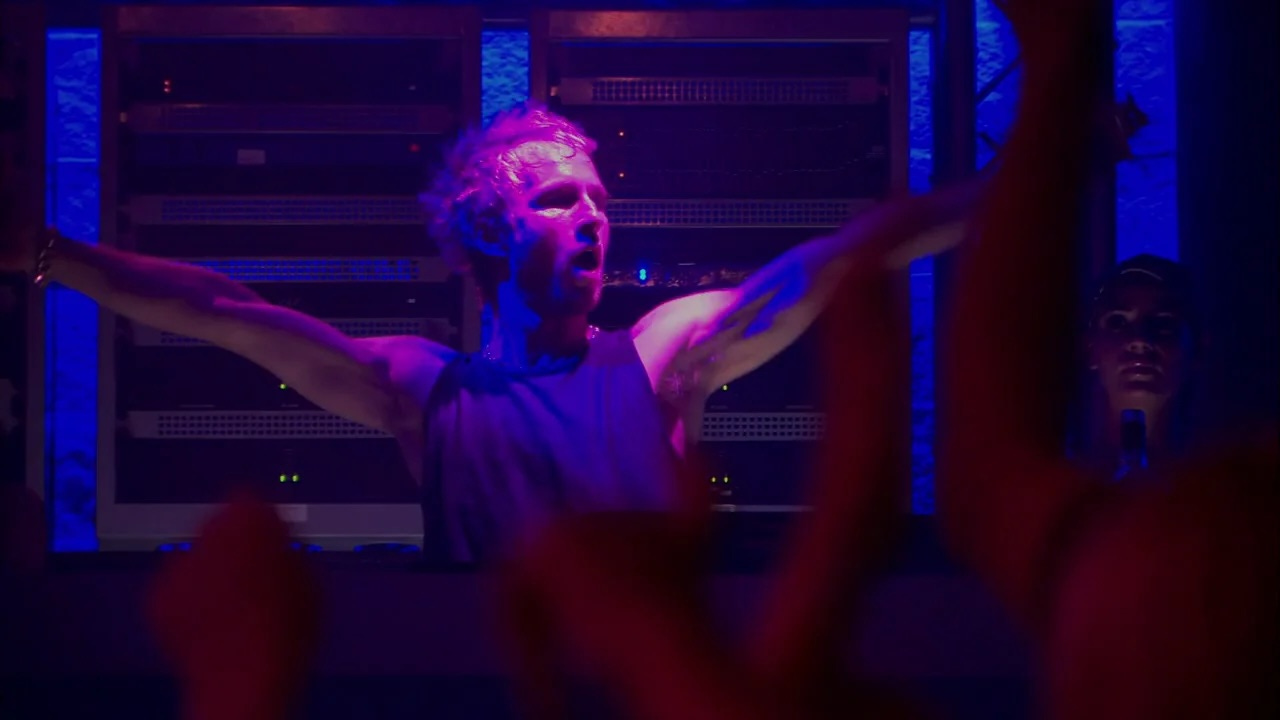The story of the deaf DJ
And how new tech allows us to design experiences for people that have been left out in the past
👋 Hi friends, it's Hesam with issue #26 of 4 bits. 4 bits is a biweekly newsletter where I share thoughts and musings on how to build memorable experiences.
Here’s what I’ve been listening to: Sia and Kylie Minogue - Dance Alone (Kito Remix) (Spotify).
I’m always impressed when artists show back up on my radar decades later. Kylie Minogue peaked early to mid 2000s for me, and now she’s in this track with Sia. The Kito remix is higher energy than the original version and worth a listen to.
The story of the deaf DJ
Frankie is on the top of his game as a DJ. Night after night, he’s performing in front of thousands of people at mega clubs in Ibiza.
Located off the coast of Spain, the island of Ibiza is "the party capital of the world". Every year, electronic dance music (EDM) enthusiasts make the pilgrimage to Ibiza to hear DJs like Frankie play. Frankie plays at some of the best clubs, like Pacha and Amnesia. The crowds go crazy for Frankie.
But one day, Frankie starts to lose his hearing.
He can't hear music anymore.
He can't mix music anymore.
It gets so bad that he is booed off stage during one of his performances. He gets mad and throws a turntable at the audience. He’s kicked out of the club.
Frankie's career as a DJ is over.
After a short bout with depression, Frankie accepts his new reality. He finds a deaf organization and meets a girl. She teaches him how to read lips. Frankie becomes friends with her. They fall in love.
One day, they go to a concert. Frankie stands next to a big speaker. He can feel the beat of the bass thumping. He starts dancing. He looks around him and notices how other people are moving to the beat.
Frankie realizes he can "hear" the music through the beats and by looking at what's around him: the people dancing, the DJ moving.
He rushes home and starts to practice hearing music in this new way. He get better and better at matching beats. Eventually, he makes a mix album by watching sound waves and strapping his feat to pulsating speakers. He releases the mix album and it’s a huge success.
And just like that, Frankie is able to DJ again.
Frankie's story is not real.
It's the plot from a movie released back in the 2000s, It's All Gone Pete Tong. It's All Gone Pete Tong is a mock-umentary highlighting the story of a famous DJ as he comes to grips with his new fate of losing his hearing1. I watched it mainly because there weren’t many movies (mock-umentary or not) that covered EDM.
But while Frankie's story is fictional, the reality is that millions of people miss out on the opportunity to fully experience music performances.
Here's why:
Deaf concertgoers only sometimes have access to an interpreter and their sensory experience of the sonic experience is limited to hacks like holding a balloon, piece of PVC pipe, or standing close to the speakers to feel the vibrations. Even then, the vibrations are blunt, one-channel waves and lack nuance.
-Not Impossible Labs
What if technology could help deaf concertgoers hear music but in a different way?
Music: Not Impossible
We aren’t far away from a viable solution to this opportunity. Not Impossible Labs2 is developing Music: Not Impossible, a solution to help deaf concertgoers immerse themselves in music like never before. They've created a wearable that wirelessly receives data during a performance and translates those into vibrations the wearer can feel. There's a harness, two wrist bands, and two ankle bands creating 24 points of vibration. The result: a “surround body experience".

The technology went live in 2018 in Las Vegas with 200 concert goers. Since 2021, Music: Not Impossible has partnered with the Lincoln Center, the arts complex in New York, for performances ranging from silent discos to orchestras. Music: Not Impossible is genre agnostic, making it adaptable for all tastes of music.
What I appreciate most about Music: Not Impossible is that they started by focusing on an extreme user3: the deaf concertgoer.
By designing for the deaf first, they were able to create a technology that could improve the experience not only for deaf concertgoers, but for everyone at a concert. As Mick Ebeling, the founder of Not Impossible Labs puts it:
Everybody, whether you can hear or can't hear, can have a shared experience.
Mick Ebeling, founder of Not Impossible Labs
Being at a concert with others, vests pulsating to the beat of the music, might not appeal to purists. But for some, it’s an opportunity to experience music with a richness that we often take for granted.
I left out many details about the plot because they weren’t relevant. You should watch the movie for free with ads if you want the whole story.
Not Impossible Labs is developing solutions in other areas like food insecurity, vaccine access for children, and access to prosthetics in remote areas. You can view their other projects.
More about how extreme users can reveal new opportunities in issue #23 of 4 bits.





Thanks for the post Hesam! It is amazing how extreme users can help us see things that we are not considering when designing, and it is always interesting to see how many inventions based on "extreme" insights become mainstream. I am thinking, for example, about all the different innovations devbeloped for space travel (extreme users in extreme environments) that later became everyday objects: memory foam, ear thermometers...handheld vacuum cleaners! Thanks for a great post!